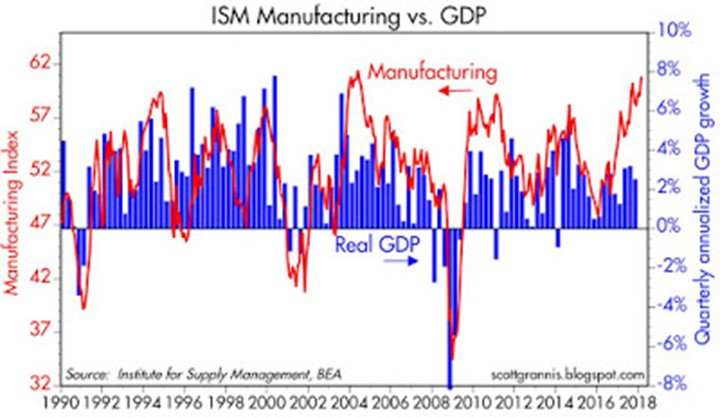The economic calendar is normal but featuring the monthly employment report. Usually that would be the focus, and it might become so by week’s end. Until the situation is clarified, the paramount question will be: has the US ignited a trade war?
Last Week Recap
My last full edition of WTWA, two weeks ago, asked whether the coast was clear. Good question, and I guess we got the answer. Last week’s indicator update post pointed to a discussion of an infrastructure bill. In the wake of other events that got no attention at all.
I did cite an escalation of trade rhetoric as among my worries, but it went from worry to major impact much faster than anyone expected. It took only a few minutes.
The Story in One Chart
I always start my personal review of the week by looking at a great chart. The Investing.com version of the S&P futures shows the action while the stock market is closed. The interactive version also lets you specify your choice of both time and intervals. Finally, there is a tag for significant news at various key points.

The decline this week included a 5% trading range, continuing the recent record of higher volatility. I summarize actual and implied volatility each week in the Indicator Snapshot.
The News
Each week I break down events into good and bad. For our purposes, “good” has two components. The news must be market friendly and better than expectations. I avoid using my personal preferences in evaluating news – and you should, too.
The economic news was mixed. Once again, the market reaction had little to do with the news flow.
The Good




The Bad
Housing data
- New home sales declined to an annual rate of 593K and a decrease of 1% year over year. Calculated Risk suggests that we be cautious until we have February and March data. This may help determine whether tax law changes are part of the cause.
- Pending home sales declined 4.7% for the month and 3.8% year-over-year. (Calculated Risk).

Powell testimony spooked the market, which saw indications of a more hawkish Fed. The market has consistently been less bullish on the economy than the Fed, expecting a slow pace of rate increases. Eddy Elfenbein notes that the futures market moved the chance of a fourth hike this year to 33.5%. He is skeptical. Prof. Tim Duy, our go-to expert on the Fed, focused more on the precise language, particularly the concern about an overheated economy.
My focus fell on this in the written testimony:
In gauging the appropriate path for monetary policy over the next few years, the FOMC will continue to strike a balance between avoiding an overheated economy and bringing PCE price inflation to 2 percent on a sustained basis.
This is a crucial sentence that marks a change in focus. Compare this with the previous version of this testimony, delivered by former Federal Reserve Chair Janet Yellen in July of last year:
The Committee continues to expect that the evolution of the economy will warrant gradual increases in the federal funds rate over time to achieve and maintain maximum employment and stable prices.
In a follow up post, Prof. Tim analyzes the increased concern with inflationary pressures.
[Jeff] The Fed has typically waited too long to hike rates and been unable to stop incipient inflation. Financial markets can handle a gradual increase in rates. Transparency about Fed intentions and criteria is helpful.











Leave A Comment